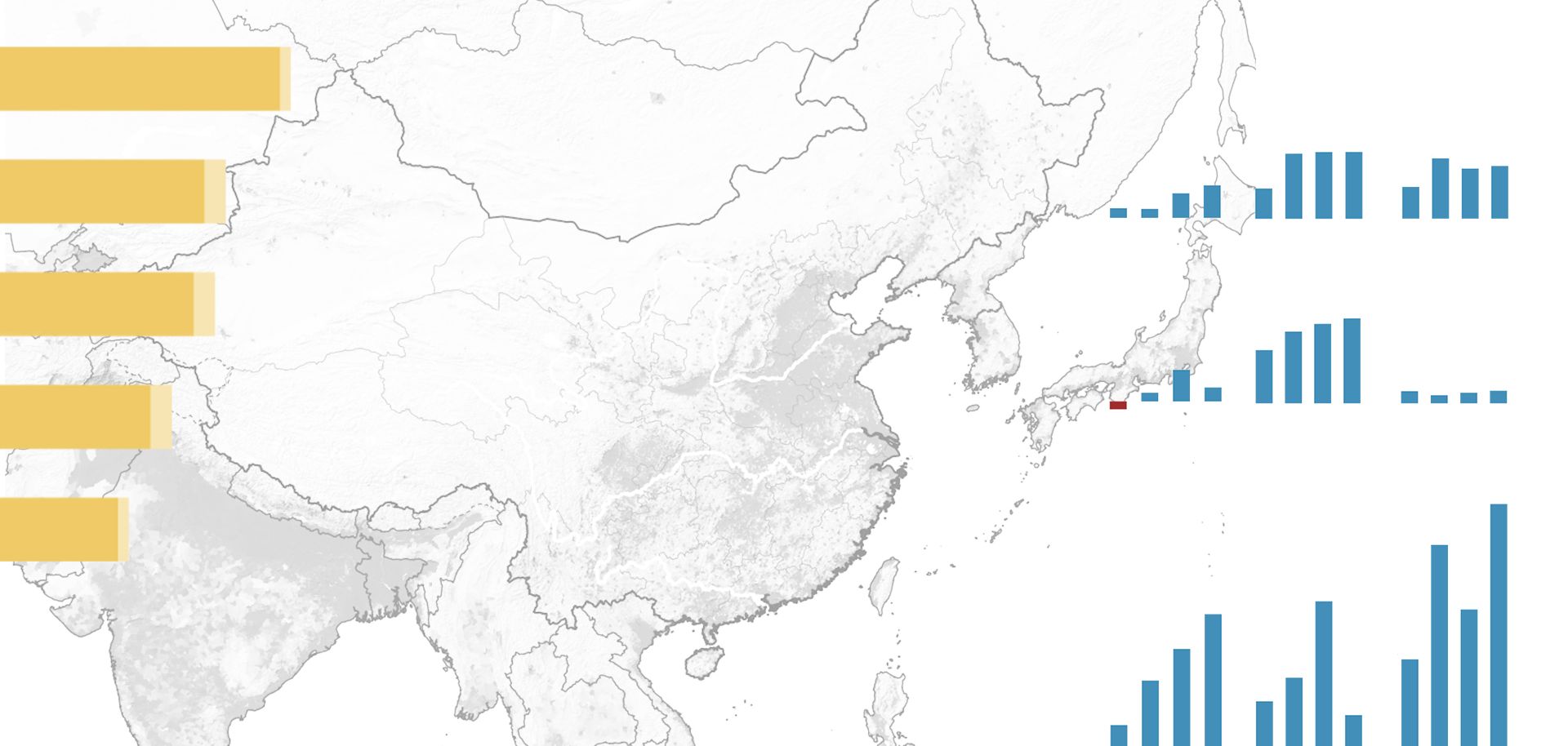
The United States is a major producer and exporter of soybeans, but the fastest growth has occurred in Brazil. China consumes more soy than any other nation. It imports more than 60 percent of globally traded soy, which represents more than 80 percent of China's total annual supply. Controlling nearly 80 percent of global rice exports, the top exporters of rice in order of rank are Thailand, Vietnam, India, Pakistan and the United States. The majority of rice produced in the world is consumed in the country of production; only about 7 percent of the world's rice production is available on global markets. Comparatively, 11 percent of corn produced is available on global markets, 20 percent of wheat and 37 percent of soy. This makes rice the most easily destabilized of the four key staples. Wheat is widely produced by countries all over the world. However, more than 90 percent of the export market is dominated by ten entities: the United States, Australia, Russia, Canada, the European Union, Argentina, Kazakhstan, Ukraine, Turkey and Uruguay. China is by far the largest producer of wheat, accounting for about 17 percent of global production (only the states of the European Union collectively produce more). However, China is not a major player in the global market because it consumes almost all it produces. The United States, Brazil, Argentina and Ukraine account for more than 80 percent of global corn exports. Japan, Mexico, South Korea and Egypt are the most import-dependent nations, purchasing more than 40 percent of all globally traded corn.


